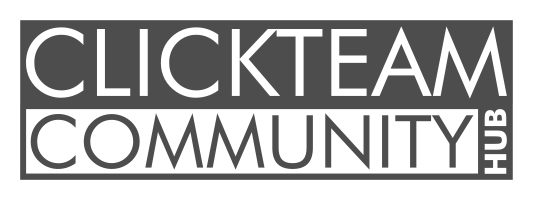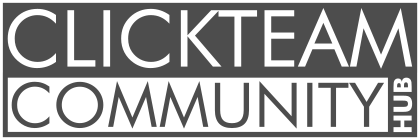Thanks for your response. I look forward to seeing it ready for 2.5. The issues I've had with it, such as setting font face and size were not related to Fusion version. I initially encountered these issues while using it with MMF 2 Developer. Currently I have MMF 2 Developer as well as Fusion 2.5 Developer. I'd be more than happy to test it out when you finish updating it.
Posts by Kracker
Welcome to our brand new Clickteam Community Hub! We hope you will enjoy using the new features, which we will be further expanding in the coming months.
A few features including Passport are unavailable initially whilst we monitor stability of the new platform, we hope to bring these online very soon. Small issues will crop up following the import from our old system, including some message formatting, translation accuracy and other things.
Thank you for your patience whilst we've worked on this and we look forward to more exciting community developments soon!
Clickteam.
A few features including Passport are unavailable initially whilst we monitor stability of the new platform, we hope to bring these online very soon. Small issues will crop up following the import from our old system, including some message formatting, translation accuracy and other things.
Thank you for your patience whilst we've worked on this and we look forward to more exciting community developments soon!
Clickteam.
-
-
This is a bit of an old thread, however, I'm still wondering about the possibility of a working PDF solution for Fusion 2.5. Originally it was for MMF 2. I'd have no issues with the finished extension being released to the Clickteam Community.
-
There's an ActiveX called Audio Convertor ActiveX Lite (Please login to see this link.). The price for a single developer is $119. I installed it and checked MMF2 Dev. It shows up in the list when you add the ActiveX object to your project. While LAME could be an option, it's to get it to work with MMF. The lame_enc.dlls that I have found will not register as an ActiveX. Therefore you'd have to use an actual language (e.g. Pytho, .NET, etc) to talk with the properly compiled lame_enc.dll. I have seen a couple attempts of a Lame ActiveX (LAMEX and LAMECOM) but those projects appear to have been abandoned.
-
I've researched a lot about serials, DRM, etc. If you need serial distribution and disable of serials, Install Creator Pro can do this. It has a built in serial verification, not remote though. You can also have banned serials so that if someone does have a copy of your software it can prevent them from installing the updates. The downfall is that all a banned list can do is prevent the person from installing updates using that particular serial. To check for a valid serial you'd either have to:
A.) Encrypt the list of serials in your app to check on startup that a valid serial is available (such as by encrypted info in registry entry)
B.) Create your own serial system that generates serials based upon info and an algorithm (prone to keygens)In the end, the fact of the matter is that thieves will be thieves. Top of the line software gets their serials and systems cracked in no time. Best thing is to focus mainly on software development.
I plan on implementing a system called White Knight Protector. (Please login to see this link.). Depending on your costs it's a small price to pay for the system. While I'd prefer a self-hosted solution, this will do for now. Basically the software protects your exe. On startup the person has x-number of days to use your software for free. After that they must register it. The system doesn't tie in to any payment processors. In a way it's a trust system, but in a way it's not. I can login to check any new registrations. If I see a registration that I don't have payment for I can disable that app. I will set the app to connect to verify licensure 45 days after registration. This gives 30 days after the money back guarantee/refund time plus an additional 15 days in case the person got caught up and requests a refund a few days after the 30-day time frame.
It's not flawless but I've decided i want to spend more time on developing my software than trying to stop Joe/Jane theif from stealing software. I'll try my best to keep it off file sharing sites via DMCA takedown requests as before releasing my software I will copyright it.
-
I'm working on a project where I'm wanting to be able to export certain information to a PDF file. I know of the PDF Object, however, it seems a little buggy. Basic things such as changing the font to Arial causes it to not generate PDFs. I would like an estimate on what it would cost to have a PDF extension created similar to the PDF Object. The PDF Object uses the open source lib HARU.


